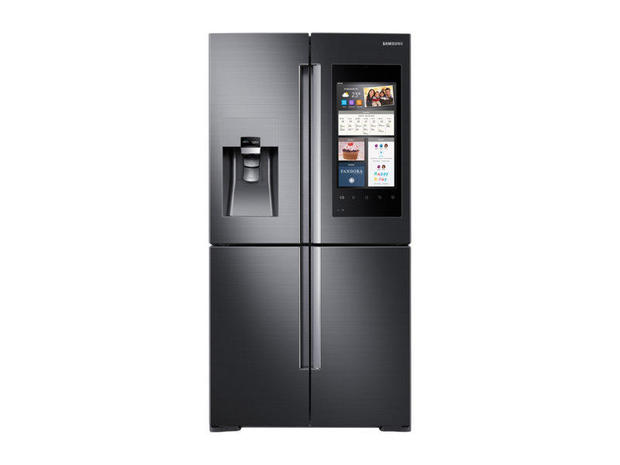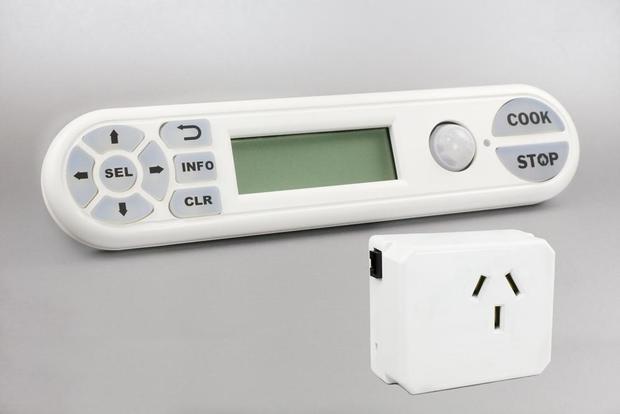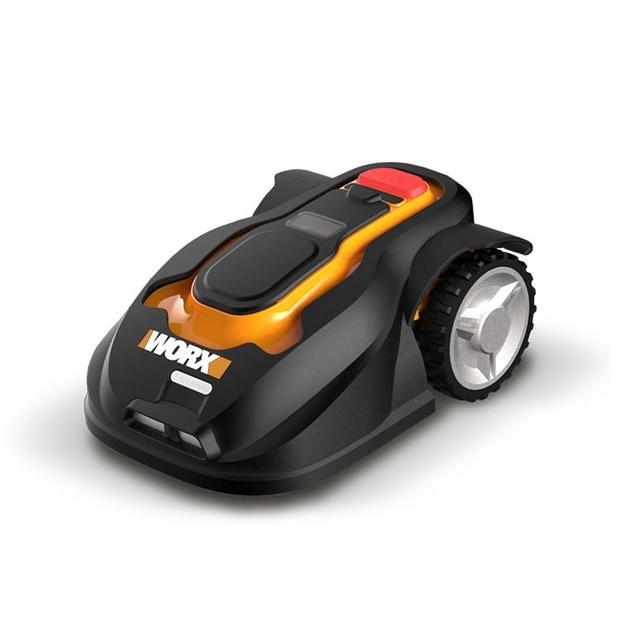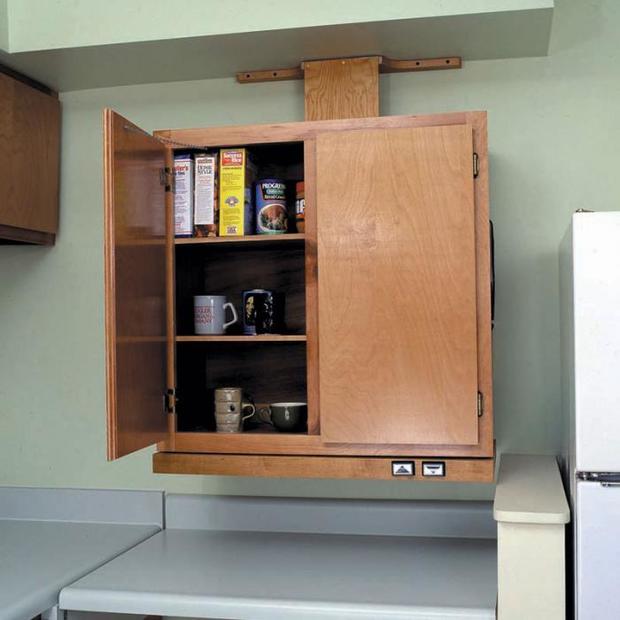10 smart home features to help you age in place
"Aging in place" is a hot topic these days -- particularly among baby boomers who want to maintain their independence.
While flocking to smaller homes in warmer climates is still attractive for some seniors easing into their later years, more and more people are choosing to stay where they are. In fact, 85 percent of homeowners 55 and older aren't planning to sell their homes in the next year, according to a 2017 survey from Realtor.com.
"Aging in place really is a concept based on where you're living and your preference to staying, whatever you home of choice is," said Laurie Orlov, tech industry veteran, eldercare advocate and founder of Aging in Place Technology Watch.
Not every home is set up to ease the transition into adults' older years, when mobility can become a major issue. Declining hearing, sight and mental awareness can also affect how easy or safe it is to continue living independently in a person's home of choice.
But smart home technology brings a whole host of solutions to the table.
"Electronically controllable thermostats, lighting, motion sensors, smart doorbells -- these are all technologies that have been bundled into the concept of smart homes," said Orlov. "You can see how they would be useful in helping people remain in their homes even as they felt less safe in the neighborhood or weren't good at thermostat management or were at risk of falling in their own homes and being left alone."
However, there can be significant barriers for homeowners hoping to adapt their homes to be "smarter." One issue is the sometimes-complex setup process these features require, said Orlov, which can intimidate homeowners who aren't confident about their tech savviness.
Another is the cost, not only of the items themselves, but also of high-speed internet service plans, which puts smart home technology out of reach for seniors with lower incomes.
In some cases, an individual's health or financial situation could still require her to look for a different living situation. For homeowners preparing for the future, or hoping to extend their years in their current homes, here are 10 smart home features that could help.
Amazon Echo
A major trend, according to Orlov, is the rise of smart home assistant products like the Amazon Echo.
"Certainly those who can afford it are vastly going to prefer to speak to technology than touch it," she said.
Not only do smart home assistants integrate well with other smart home products, they can complete a number of tasks that some people might find difficult to do as they age. A smart home assistant can play music, read books and place phone calls, all by voice command.
"As older people remain longer in their own homes, they can keep their minds active and lives engaged with others and find services they need," Orlov continued.
The Amazon Echo is available in several sizes, but the midsize version is available for about $100.
Ring Video Doorbell
According to the Older Americans 2016: Key Indicators of Well-Being report from the Federal Interagency Forum on Aging-Related Statistics, 46 percent of women over the age of 75 lived alone in 2015. For men, the figure is 23 percent.
Safety is, and will continue to be, a major concern for older people who live alone. Smart home devices like the Ring video doorbell allow a homeowner to see, hear and speak to someone at their door (via a smartphone, tablet or PC) without having to open it.
The Ring video doorbell is available, in a variety of colors, for about $180.
Sensi Smart Thermostat
Digital thermostats can be difficult for even the most tech-savvy homeowners to understand. Smart thermostats like the Sensi Smart Thermostat help aging homeowners more easily regulate their home's temperature, which can be a health concern as well as affecting comfort.
Sensi connects with smart home assistants (like the Amazon Echo) and can be voice-controlled, so aging homeowners don't even have to push a button or read the text on their thermostat's screen. It can also be controlled via a free mobile app from a smartphone or tablet.
The Sensi Smart Thermostat is available for about $130.
WeMo Light Switch
Falling is a major concern for aging homeowners, especially those who live alone. Fumbling around in a dark room for a light switch creates a huge risk for falls that can be lowered by installing a smart light switch.
The Wemo Light Switch allows homeowners to control their lights -- and small appliances -- via an app on their smartphone. Lights can be set to a timer or controlled from outside the house with the app. It also connects with smart home assistants, so homeowners can turn their lights on and off by voice command.
The Wemo Light Switch is available alone for about $50.
Samsung Family Hub Refrigerator
Though they're often marketed to young, busy and tech-savvy families, smart refrigerators like the Samsung Family Hub can help aging homeowners stay on top of their grocery shopping. It's not available yet in all areas, but in some places the Samsung Family Hub lets owners order groceries directly from their refrigerator doors, which could be helpful for older people who struggle to get to the grocery store.
Not only does the Samsung Family Hub come with voice technology, but it can read out recipes for older chefs who might struggle with the small print in recipe books. It comes at a higher price point than some other smart home products, with the least-expensive model available for about $3,500.
MedMinder Pill Dispenser
Smart home technology isn't just useful for aging homeowners. It can also bring peace of mind to family members and caregivers. Seniors with memory problems often struggle to remember to take their medication at the right time and in the appropriate amounts.
The MedMinder Pill Dispenser helps seniors stay on top of their medication, and it can act as a safety net if seniors miss important medications or accidentally double up.
MedMinder offers several models. The most advanced allows only one compartment to open at a time and offers reminders (like flashing lights, audio prompts and phone call or text message reminders). The device can also alert caregivers or medical professionals if something goes wrong.
MedMinder Pill Dispensers are available from about $40 to about $65, depending on the model.
Stove Guard CookStop
Even the best of us have left the stove on once or twice, but that mistake can be a significant risk for older homeowners with memory or hearing loss. The Stove Guard CookStop will turn the stove off if left unattended for a predetermined amount of time.
The settings are adjustable with a secure key, and owners can install it without having to modify the stove itself. It also has an alarm that will sound when the stove is about to turn off. CookStop models are available for various types of stoves, ranging in price from about $515 to about $650.
Worx Landroid M
While robotic vacuum cleaners can help aging homeowners keep the insides of their homes clean, lawn care can be an even bigger struggle for seniors who struggle with mobility. Worx's Landroid M cordless robotic lawn mower helps homeowners take care of their lawns without needing to walk behind a mower.
It uses artificial intelligence to navigate the lawn, even in narrow spaces. When it rains, the Landroid M will shut down until the grass is dry. When the battery runs low, it automatically returns to the charging station.
The Landroid M is available for about $1,000.
Automatic Doors
The phrase "smart home" conjures an image of a house full of products that connect to smartphones, each other and the cloud. But in past years, Orlov said, experts used a more all-encompassing term: "home automation." Home automation products include items that don't fit neatly into the interconnected Internet of Things, she said, like automatic doors.
Mobility can become a problem for aging homeowners, even inside their own homes. Doors that don't require fumbling with a handle -- and in some cases, don't swing out, but slide side to-side -- can be a big help for seniors who struggle to get around.
Companies like Affordable Adaptive Solutions sell automatic door systems and can provide pricing upon request.
Approach Wall Cabinet Lift
Reaching the top shelf of a kitchen cabinet is a common struggle. Aging homeowners, however, are often even less able to climb step stools or chairs to take items off high shelves. Cabinet lift systems help bring the top shelf to a more accessible level.
The Approach Wall Cabinet Lift has a button that adjusts the height of the cabinet up to 20 vertical inches. The system also has a safety shut-off that will automatically stop the shelf if it comes into contact with anything on the counter below it.
The Approach cabinet system is available for about $1,600. Freedom Lift Systems also carries lift systems for other kitchen features, such as sinks and cooktops.










